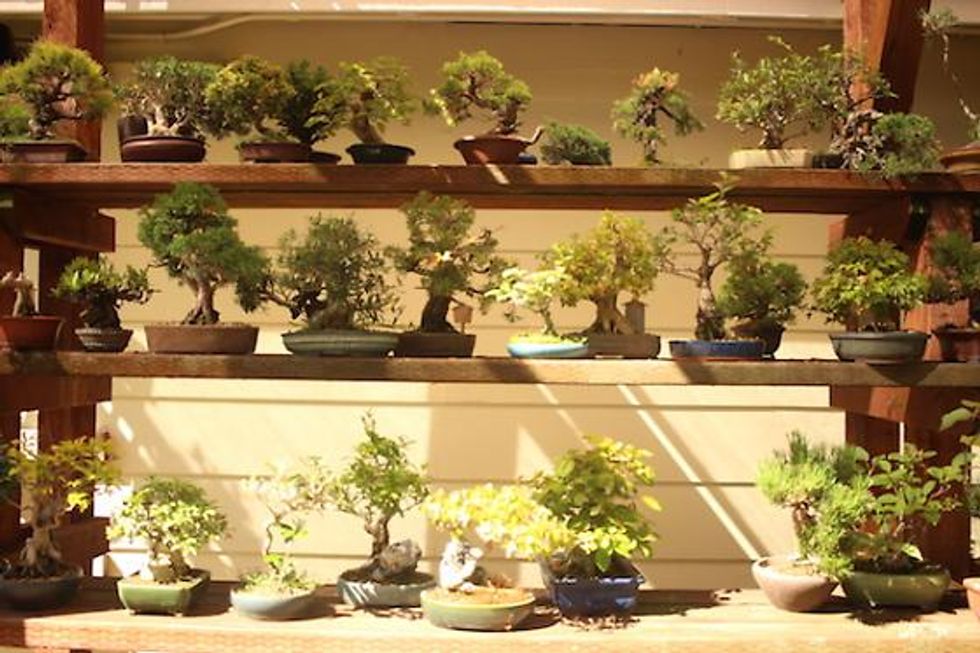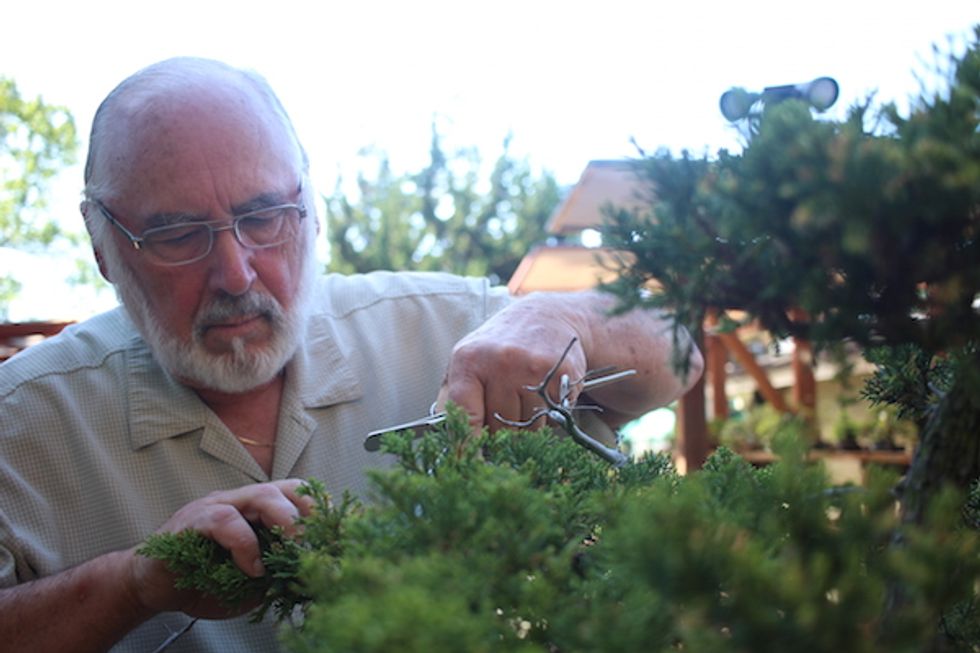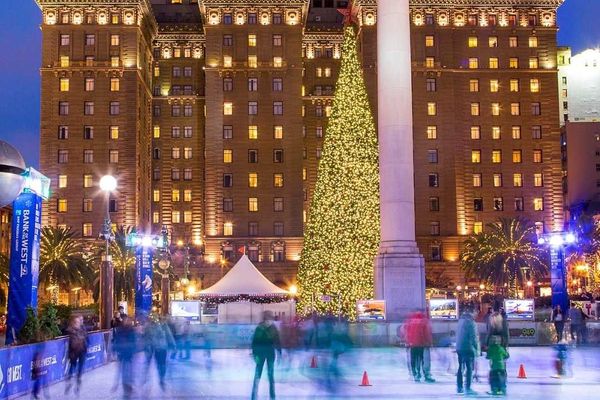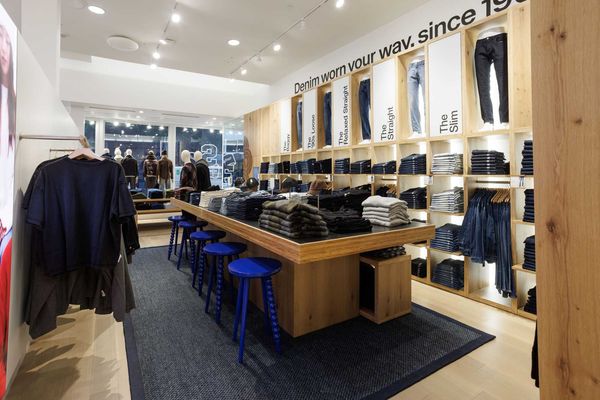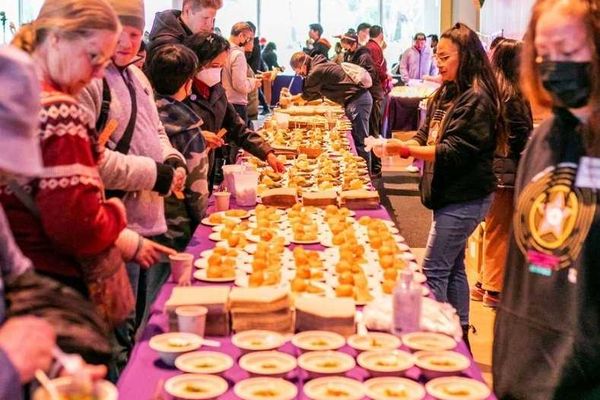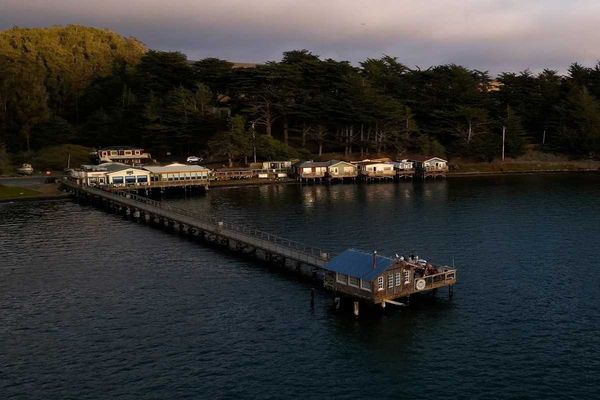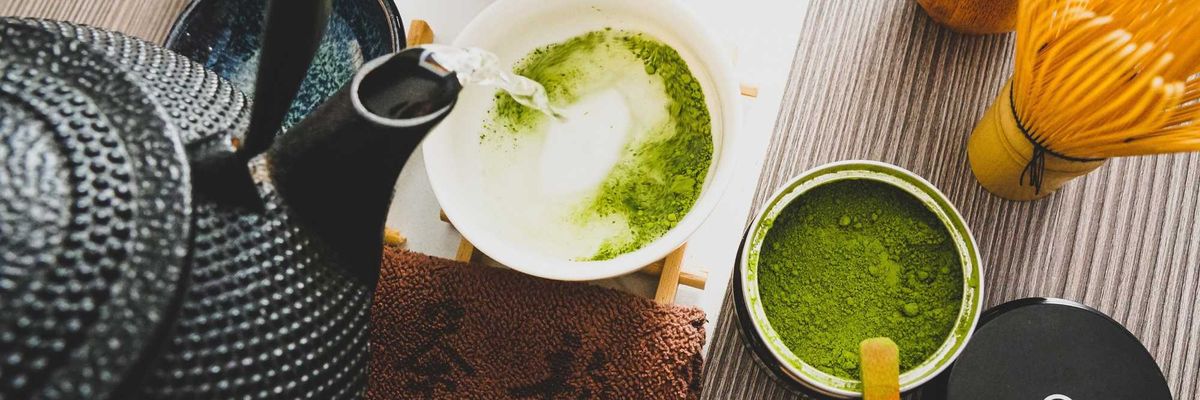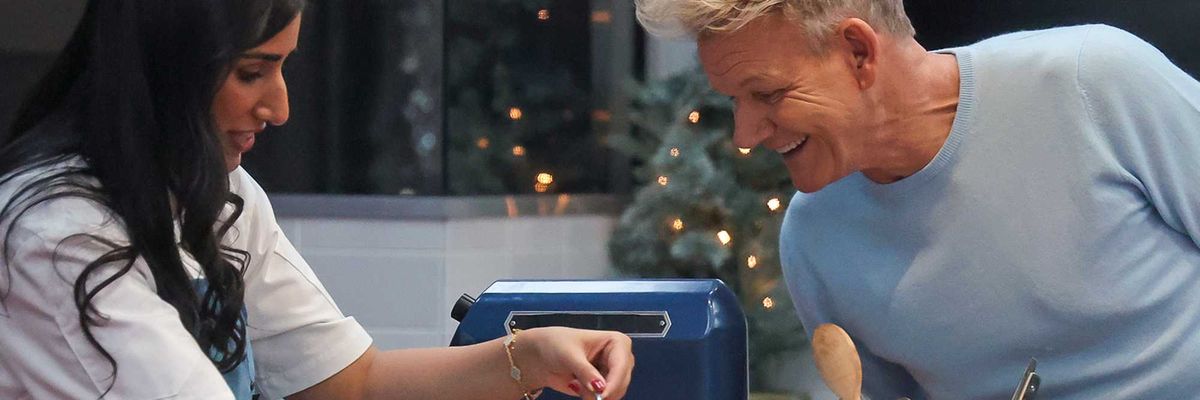To walk through the Japanese-styled wooden doors on the Northern inlet of Oakland’s Lake Merritt is to enter another world. The landscape is checkered with trees that are bent and wired to mimic what one might see in nature—that is, if everything in nature were just a few feet tall. This, the volunteer-run Bonsai Garden Lake Merrit (BGLM), is among the Bay Area’s few remaining places to celebrate the treasured ancient art form of Japanese bonsai.
Once a major hub for Japanese immigrants, it is no surprise that the San Francisco Bay Area has a deeply rooted relationship with bonsai. Between 1890 and 1910, more than 100,000 Japanese people moved to the U.S., bringing with them such native customs as bonsai, the art of planting and caring for miniature trees in pots. Bonsai was borrowed by Japanese monks from Chinese Daoists, who believed they could harness the powers of Earth by miniaturizing natural landscapes in a practice known as penjing.
The unique cultural art form made an impression on a small population of local horticulturalists and Japanophiles; among them Anson Burlingame, a diplomat who owned farmland south of the city (yes, that Burlingame). It is said that it was Burlingame who brought the first bonsai tree to the Peninsula after touring Japan in the 1860s. That tree, a Daimyo Oak, is still alive and on display at BGLM.
But it would be another 70 years or so until the art of bonsai would see real growth in SF. Following World War II, the release of Japanese farmers from internment camps led to the emergence of bonsai gardening clubs across California, according to Joe Byrd, chairman of BGLM. “When families came back from the camps, they were pretty distressed. They wanted to find some way to restore their honor,” he says.
But as the bonsai clubs sought to salvage this piece of their culture, they became increasingly exclusive to Japanese speakers. Eventually, this led to their demise. “They became sort of social organizations and stopped accepting new members,” says Eric Schrader, president of Bonsai Society San Francisco. “When the members passed away, the clubs kind of ceased to exist.”
Gordon Deeg cares for more than 100 bonsai trees in his Atherton backyard.
As interest in bonsai declined among younger generations of Japanese-Americans, the art form fell into the hands of outsiders—read: white Americans, some of whom even travel to Japan to study bonsai with the masters. Gordon Deeg, a leader at San Mateo’s Sei Boku Bonsai Kai Club, is one such apprentice. He now has a collection of more than 100 bonsai trees in his Atherton backyard.
While the bonsai tree in Japan is akin to America’s Christmas poinsettia—ubiquitous—and there are few fanatics left to rival Deeg around here, a career tending bonsai can literally pay off. Bonsai master Ryan Neil, a former Bay Arean now stoking the bonsai craze in Portland at his nursery, Mirai, gets as much as $30,000 each for his trees, while a win in an international competition could garner a six-figure payday for talented connoisseurs.
While there’s not much of an industry left for bonsai in SF—the Bay Area’s only remaining bonsai store is hidden away in Japantown—hobbyists remain and are even sprouting up in the most unexpected place: tech world. That’s right, techies seeking analog ways to unwind are now making appearances at bonsai clubs and meetings.
Schrader and fellow hobbyists tending their bonsai in Bernal Heights.
One such techie is SF native Michael Hylton, director of solution marketing at the software company Cybersource, whose interest in bonsai flourished when he bought his first tree, from a store on Lombard Street, as a kid. Decades later, Hylton is the president of the East Bay Bonsai Society (EBBS), and he's making a concerted effort to introduce bonsai and the EBBS to the young generation of techies via social media.
“It’s a nice avenue to vent and focus all your attention on something that’s more personable, unlike the fast pace of high tech,” says Hylton, adding that almost a quarter of EBBS' members are young and that about half of them work in tech. In other words, it's a great escape from the every high-tech day.
Bonsai is “anti-tech," as Byrd points out. "All day, they’re talking about bits and bytes, and high-speed, and future planning. They long for something a little slower paced and not so technical.”
There are others, like Autodesk’s program management director Catherine Wolf, who says the tech world already mirrors nature, making bonsai a no-brainer hobby for industry workers.
“Trees are made up of hardware, software and they have an internal network, just like the tech world,” she says. “And there is a similarity (to bonsai) in how tech is evolving to imitate life. Our internet has grown very large and complex in a short amount of time, really because of the fundamental design—it was simple and elegant and it could scale. When you look at nature, it essentially works on those same principles.”
// Interested in taking up bonsai? Here are three ways to up your gardening game:
East Bay Bonsai Society meets on the second Wednesday of every month (except August and October); Lakeside Park Garden Center, 666 Bellevue Ave (Oakland), eastbaybonsai.org
Bonsai Society San Francisco meets the second Thursday of every month (except August), and will offer Bonsai Basics, an introductory workshop for non-members on August 16; Hall of Flowers, 10th Avenue and Lincoln Way (Golden Gate Park), bssf.org
Sei Boku Bonsai Kai meets on the fourth Wednesday of ever month (except December); San Mateo Garden Center, 605 Parkside Way (San Mateo), seibokubonsai.org





